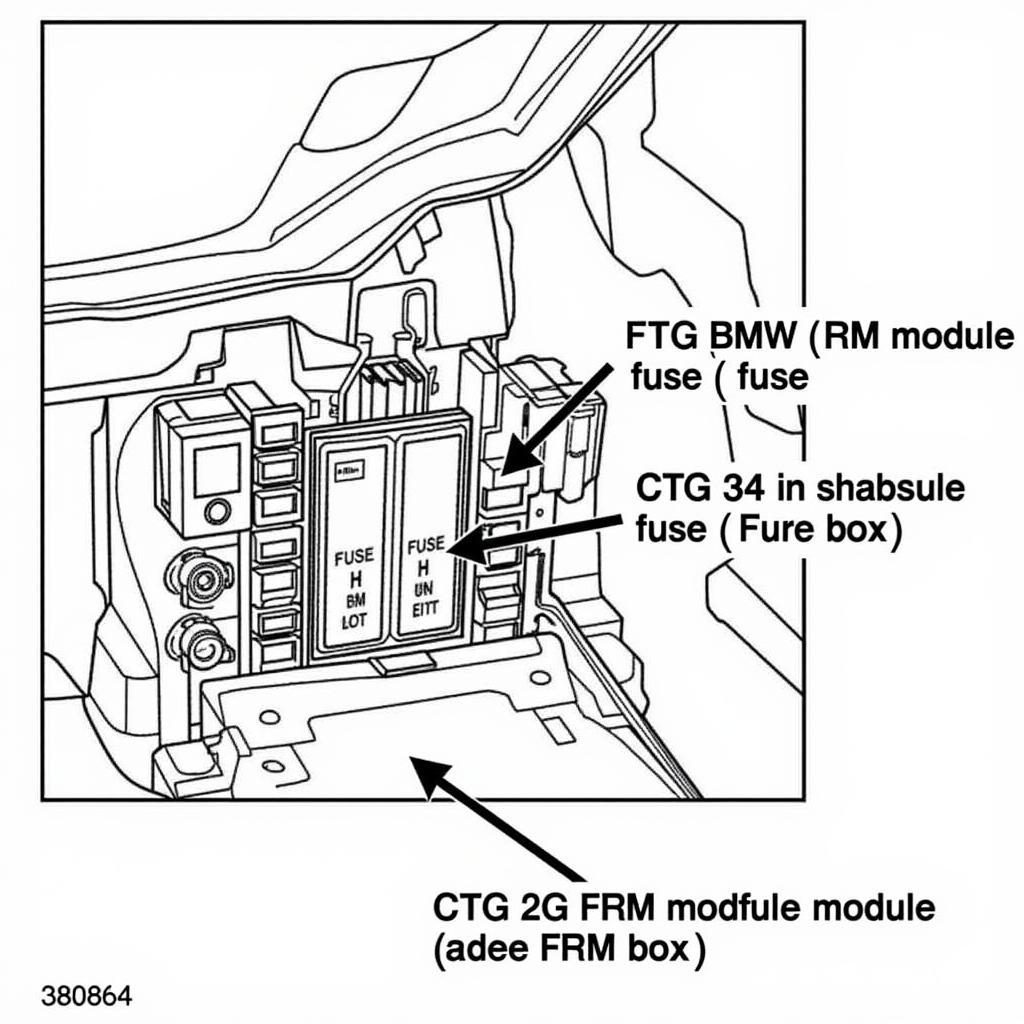The dreaded “BMW FRM module fuse” issue can leave you stranded and frustrated. This article dives deep into the common problems associated with the Footwell Module (FRM) fuse in BMWs, providing practical troubleshooting advice, repair options, and preventative measures. Understanding this critical component can save you time and money. After the opening, check out the meaning of bmw acronym frm.
The Footwell Module (FRM), also known as the body control module, is a central hub controlling various electrical functions in your BMW, such as lighting, power windows, central locking, and more. The FRM module fuse protects this vital component from power surges and short circuits. A blown fuse can disrupt these functions, leaving you in the dark, literally. There are various reasons why this fuse might blow, ranging from a simple overload to a more complex wiring problem. We’ll explore these causes and guide you through effective solutions.
Understanding the BMW FRM Module and Its Fuse
The FRM acts as the brain for your car’s electrical systems. It receives input from various sensors and controls the output to corresponding components. The FRM module fuse is the first line of defense against electrical faults that could damage the module itself. Contact Here for Free Video Tutorial.
Identifying a Blown FRM Module Fuse
A common sign of a blown FRM module fuse is the sudden malfunction of several electrical components simultaneously. This could include the failure of your headlights, interior lights, power windows, or central locking system.
Common Causes of a Blown FRM Fuse
Several factors can contribute to a blown FRM module fuse, including:
- Overloading the Circuit: Connecting too many devices to the same circuit can overload the system and blow the fuse.
- Short Circuits: A short circuit occurs when a live wire touches a ground wire, creating a surge of current that blows the fuse.
- Water Damage: Exposure to moisture can corrode wiring and cause short circuits, leading to a blown fuse.
- Faulty Wiring: Damaged or worn wiring can also create short circuits and blow the fuse.
- Malfunctioning Components: A failing component connected to the FRM, such as a window regulator motor, can draw excessive current and blow the fuse.
 BMW FRM Module Fuse Box Location
BMW FRM Module Fuse Box Location
Troubleshooting and Replacing the BMW FRM Module Fuse
Before replacing the fuse, it’s essential to identify the underlying cause to prevent the new fuse from blowing immediately.
Locating the FRM Module Fuse
The FRM module fuse is typically located in the fuse box under the glove compartment or in the trunk. Refer to your owner’s manual for the exact location. You can also find helpful resources online, such as a guide to the frm module bmw e90 location.
Testing the Fuse
Once you’ve located the fuse, visually inspect it for any signs of damage, such as a broken filament or blackened glass. You can also use a multimeter to test the fuse for continuity.
Replacing the Fuse
If the fuse is blown, replace it with a new fuse of the correct amperage rating. Never use a higher amperage fuse as this can damage the FRM and other components. If you are considering a bmw frm replacement, understanding the fuse is critical.
Preventing Future FRM Module Fuse Issues
Taking preventative measures can help avoid future problems with your BMW’s FRM module fuse.
- Regular Inspections: Regularly inspect your vehicle’s wiring for any signs of damage or corrosion.
- Avoid Overloading Circuits: Be mindful of the number of devices connected to the same circuit.
- Address Water Damage Promptly: If your vehicle experiences water damage, address it promptly to prevent corrosion and electrical problems. Consider a réparation boitier frm bmw if necessary.
“A proactive approach to maintenance can significantly reduce the risk of FRM module issues,” says John Miller, Senior Automotive Electrical Engineer at AutoTech Solutions. “Regular inspections and prompt repairs can prevent costly replacements down the line.”
Conclusion
The BMW FRM module fuse is a crucial component for the proper functioning of your vehicle’s electrical systems. Understanding its role, troubleshooting common issues, and taking preventative measures can save you from frustrating breakdowns and costly repairs. Knowing the bmw frm module price can help you budget for potential issues. Don’t hesitate to consult a qualified technician if you’re unsure about any aspect of this crucial system.
FAQ
- Q: What is the FRM module in a BMW? A: The FRM, or Footwell Module, controls various electrical functions like lights, windows, and central locking.
- Q: Where is the FRM module fuse located? A: Usually under the glove compartment or in the trunk. Check your owner’s manual.
- Q: How do I know if my FRM module fuse is blown? A: Multiple electrical components malfunctioning simultaneously can indicate a blown fuse.
- Q: Can I replace the FRM module fuse myself? A: Yes, it’s a simple replacement, but finding the root cause is crucial.
- Q: What causes an FRM module fuse to blow? A: Overloads, short circuits, water damage, or faulty wiring.
- Q: How can I prevent FRM module fuse issues? A: Regular inspections, avoid overloading circuits, and address water damage quickly.
- Q: What should I do if the new fuse blows immediately? A: Consult a qualified technician to diagnose the underlying problem.
Common Scenarios and Questions
- Scenario: My headlights, interior lights, and power windows suddenly stopped working. Question: Could this be the FRM module fuse?
- Scenario: My central locking system isn’t working, and my turn signals are flashing erratically. Question: Should I check the FRM module fuse?
Further Reading and Resources
Explore our website for more articles on BMW FRM module related topics. You can also find information on other common BMW issues and their solutions.
Need assistance? Contact us via WhatsApp: +1 (641) 206-8880, Email: [email protected] or visit our workshop at 276 Reock St, City of Orange, NJ 07050, United States. Our customer service team is available 24/7.



